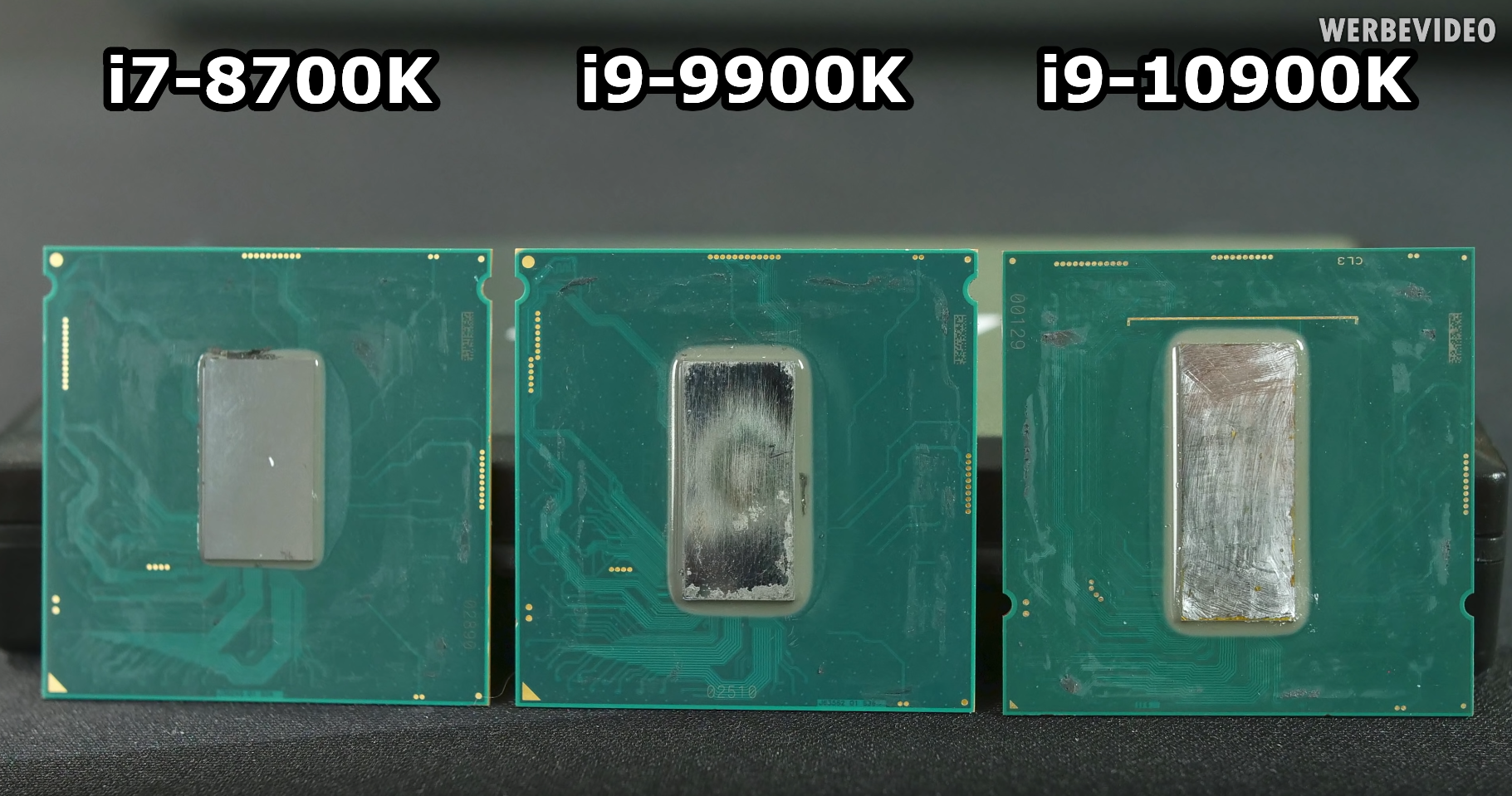Der8auer: Intel's Core i9-10900K Runs Eight Degrees Cooler With Liquid Metal
Intel no longer shares die size measurements for its processors, but that doesn't stop enterprising enthusiasts from delidding and measuring the die as overclocker Der8auer recently did when he delidded the all-new Intel Core i9-10900K. Der8auer also played around with liquid metal and a custom watercooling loop to see if it would result in improved thermals.
Die Size Measurements
| Header Cell - Column 0 | i7-8700K | i9-9900K | i9-10900K |
|---|---|---|---|
| No. of Cores | 6 | 8 | 10 |
| Die width | 9.2 mm | 9.2 mm | 9.2 mm |
| Die height | 16.7 mm | 19.6 mm | 22.4 mm |
| Total Die Area | 153.6 mm2 | 180.3 mm2 | 206.1 mm2 |
| CPU Weight (Without IHS) | 4.34 g | 5.4 g | 5.35 g |
| Substrate Thickness | 0.87 mm | 1.15 mm | 1.12 mm |
The width of Intel's 8th-, 9th- and 10th-gen flagships is identical at 9.2 mm, only the length differs. Going up the lineup, Intel added two cores two each chip. Those extra cores added ~2.8-2.9 mm of length to the chips, meaning in total, the cores on the 10900K measure out to roughly 130 mm2 -- or two-thirds of the chip's surface.

Knowing that, it's also clear how much space the CPU I/O and iGPU take up. Of course, much of Intel's I/O is handled by the chipset, but we reckon that if Intel were desperate, it could build a version of the chips without the GPU to increase the core count further -- though it's better off just advancing beyond the 14 nm process.
Intel has kept the thick substrate, but that's no surprise after the issues with bent CPUs when Skylake launched. However, the die itself is slightly thinner, which also helps keep temperatures in check.
Overclocking the Delidded i9-10900K
| i9-10900K | Standard | Delidded |
|---|---|---|
| All-Core Overclock | 5.1 GHz | 5.1 GHz |
| Voltage | 1.33 V | 1.33V |
| Temperature | Average 82.7 °C | Average 74.8 °C |
Der8auer used a retail sample of the chip for his tests, so these numbers aren't produced with a golden sample. Out of the box, most of the i9-10900K's cores ran at roughly 80 °C, with the coldest running at 79 °C and the hottest at 87 °C. Due to these high thermals, Der8auer wasn't able to overclock the chip beyond 5.1 GHz despite using a custom 360mm EKWB watercooling loop.
Der8auer kept the chip at the same settings for his second run. With the heatspreader and STIM (Solder TIM) removed and replaced with liquid metal, the chip ran an average of 7.9 °C cooler, or about 8.4 °C if you account for the 0.5 °C increase in ambient temperatures throughout testing.
Der8auer notes that you can expect about a 6 to 8 degree temperature improvement by delidding your i9-10900K. This is significant, but not huge, and Der8auer doesn't think the improvement would typically lead to a 200 MHz increase in maximum overclocks.
Get Tom's Hardware's best news and in-depth reviews, straight to your inbox.
Niels Broekhuijsen is a Contributing Writer for Tom's Hardware US. He reviews cases, water cooling and pc builds.
-
bit_user Honestly, I'm surprised it's not more. On I think Haswell-generation CPUs, I seem to recall people would get closer to a 20 C drop when switching to liquid metal. If that's right, this actually speaks to the amount of improvement in Comet Lake.Reply
BTW, congrats to Der8aur for removing the soldered IHS. I tried to delid a non-soldered Haswell, but I even chickened out on that effort. -
YukiSG Sorry for reviving a old thread but i cant help it.Reply
I delidded my 10900k in january this year.
No choice as the stock temp was way too sick. 80-90c.
After delidding and using razor to trim away the Soldered TIM as shown on how to do it by Der8aur, i manage to did it and overclocked it to 5.1ghz stable at 1.34v core.
No idea what max temp should i report here using which bench application.

